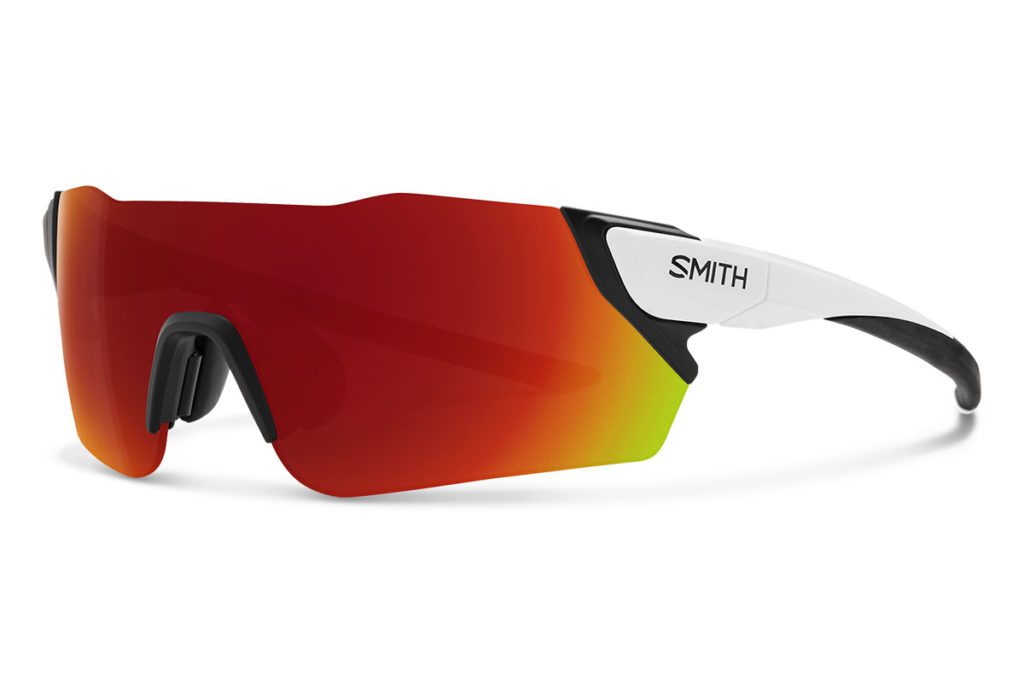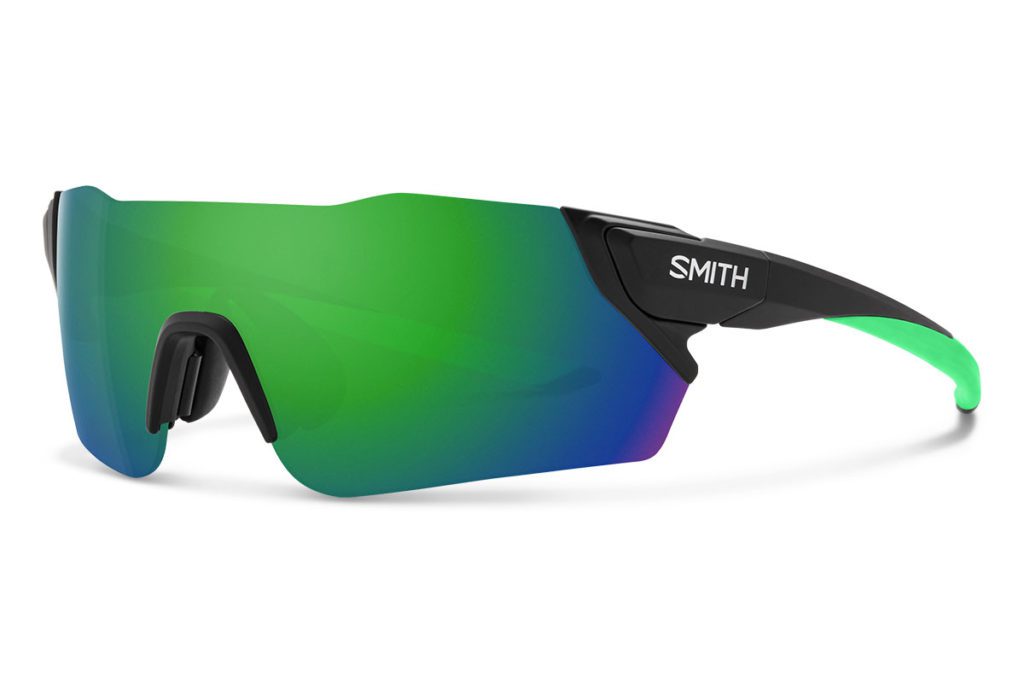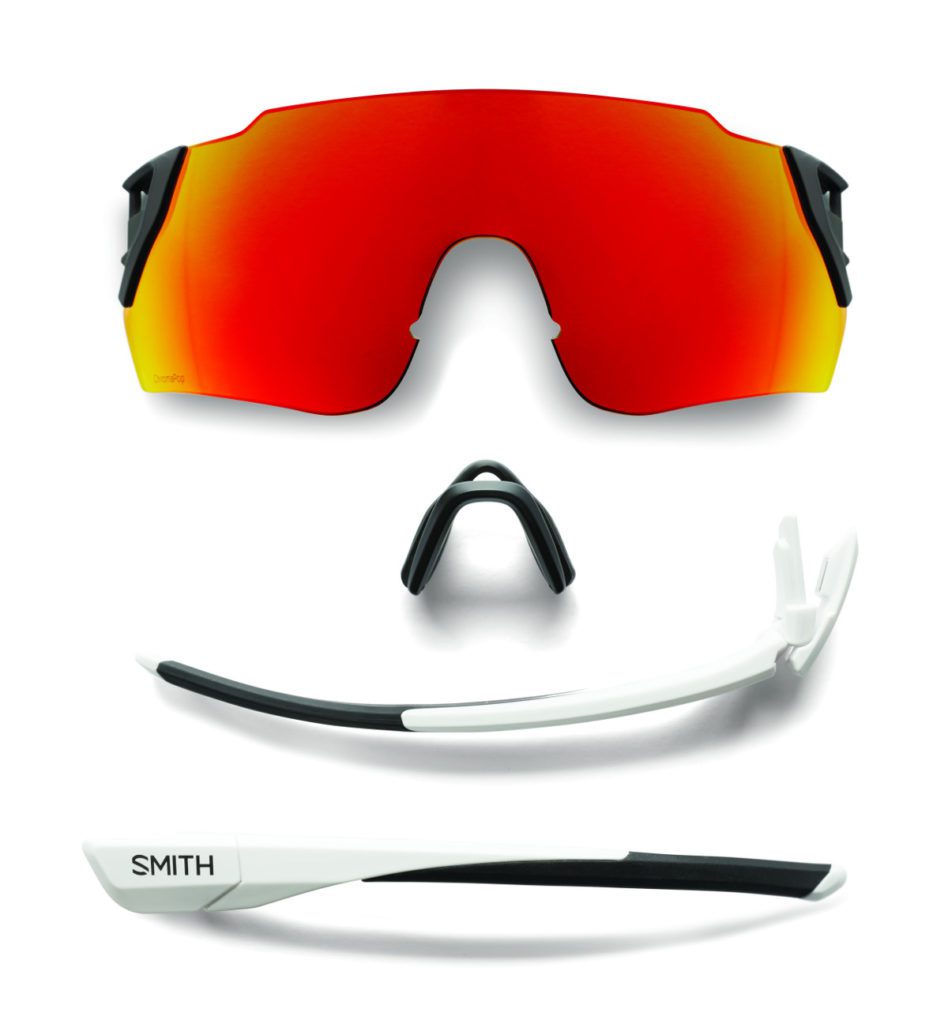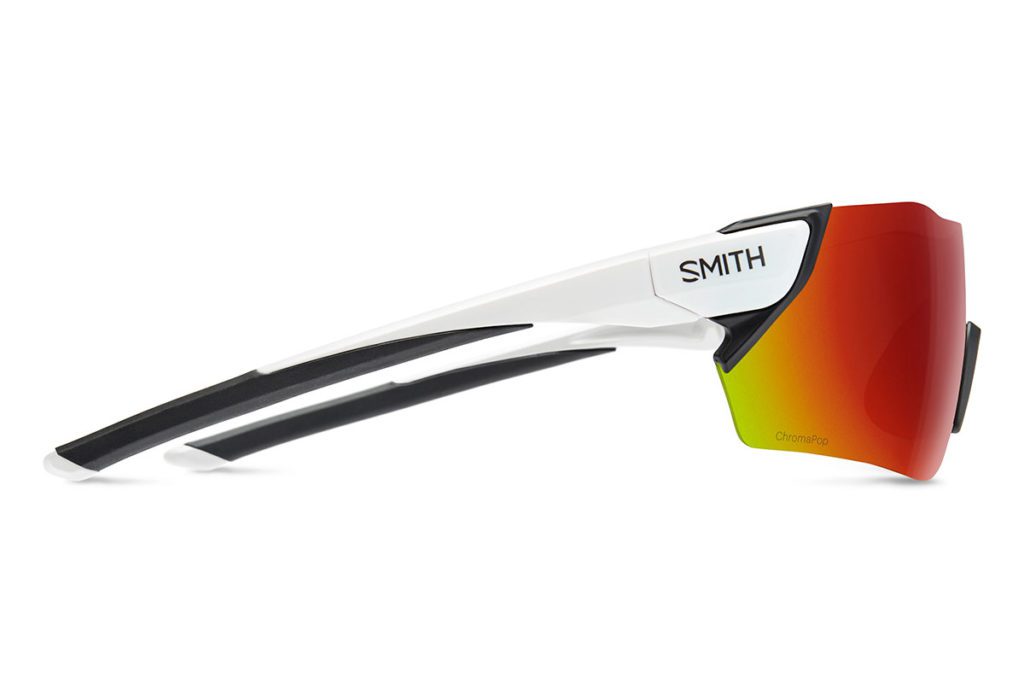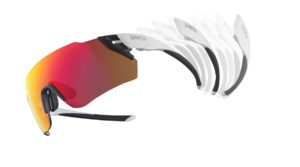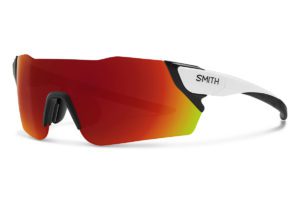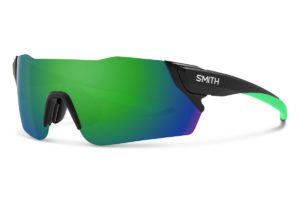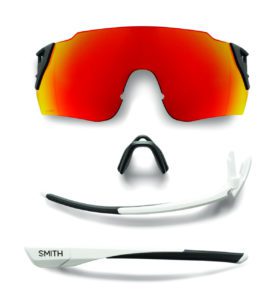Preview of the new Smith Attack sunglasses
The company from Sun Valley, Idaho, releases a new temple-changing technology, called Mag, for swapping lenses easily
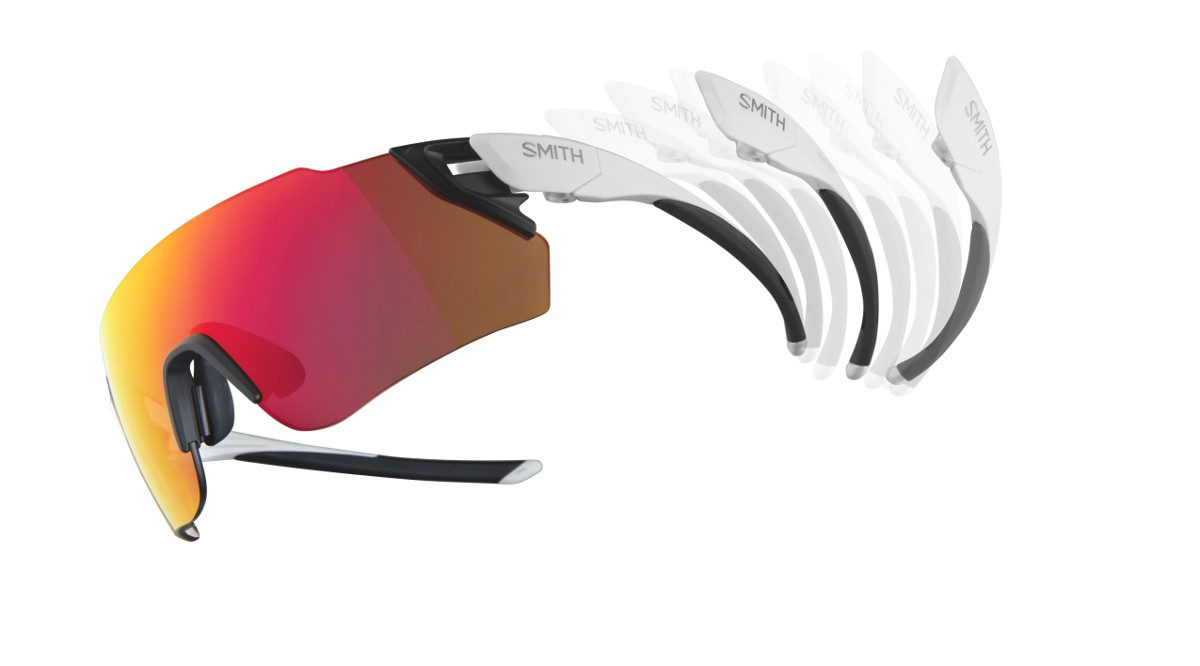
Smith, the performance glasses and helmets company, has released new performance eyewear, the Smith Attack and Smith Attack Max. They feature a new technology that lets you swap lenses easily. Smith calls the mechanism for detaching the temples Mag quick-release. Just past the hinge on each temple is an alligator-like clip. It slides into a mating unit at the side of the lens. Click. It’s locked into place. Two magnets add extra security to the connection. To remove a temple, hinge it inwards, press the clip down and then you can slide the temple off. The nose piece, with its two positions, comes off with a pinch, literally.
I’ve fought with a few interchangeable lens systems. The worst are the ones that have you twisting the frame with more force than you think you should use. I’ve said to myself, “I’m either going to pop this lens out, or bust the frame.” (For the record, I’ve yet to bust a frame…from attempting a lens change.) Smith’s Mag system is very smooth with the right amount of tactile feedback. And, it feels rock-solid secure when everything is in place. The company says that the Mag system keeps you from stressing or flexing the lens. Thus, it will last longer and stay sharper over time than others that get flexed.
Smith Attack and Smith Attack Max glasses take some design cues from Smith’s flagship Arena and Arena Max; all glasses provide serious coverage. The Smith Attack is the same width as the Arena, 125-mm wide, but the Attack is 2 mm taller at 47 mm. As for the Max versions, Attack Max is 5 mm narrower than the Arena Max, which is 130 mm. The Attack Max is 5 mm taller at 53 mm. The Attacks are more angular than their Arena siblings. For the most most coverage, you should go for the Attack Max. If, however, your helmet, sits low on your forehead, you should opt for the regular Attack. If you compare it with the Max, you’ll see that the non-Max Attack has less material at the top.
RELATED Smith introduces Rover and Route helmets
The lenses and temples come in a sizable case. The temples are stored off of the lenses. Each time you open the case, you clip those temples on. My test glasses came with the ChromaPop Contrast Rose Flash lens for low light/cloudy conditions. For a clear day, there’s the ChromaPop Sun Red Mirror. As their names indicate, they feature Smith’s ChromaPop filter. ChromaPop filters out certain wavelengths of light that the company says cause colour confusion. It also gives you more detail in a wider range of light conditions. For example, the Contrast Rose Flash lens, with a visible light transmission (VLT 48 per cent), is good when it sky completely overcast to broken clouds with the sun coming out. I found, during a riding in which the skies clears, that they were adequate in the full sun. The only trouble came when I was in the sun and headed into shade-covered road. I did find myself wishing for the Sun Red Mirror (VLT 15 per cent), which I had left in the car.
The lenses have an hydroleophobic lens coating, which means water beads up and doesn’t stick around. Grease also comes off easily. The hydrophilic temple and nose pads do like moisture for a secure it.
The Smith Attack glasses are a fine addition to the lineup of the company from Sun Valley, Idaho. I think they might usurp the dominance of Smith’s own Arenas. I know I’m keen to make the switch.
Both glasses will retail for $290. Smith plans to release the Attacks this July.

